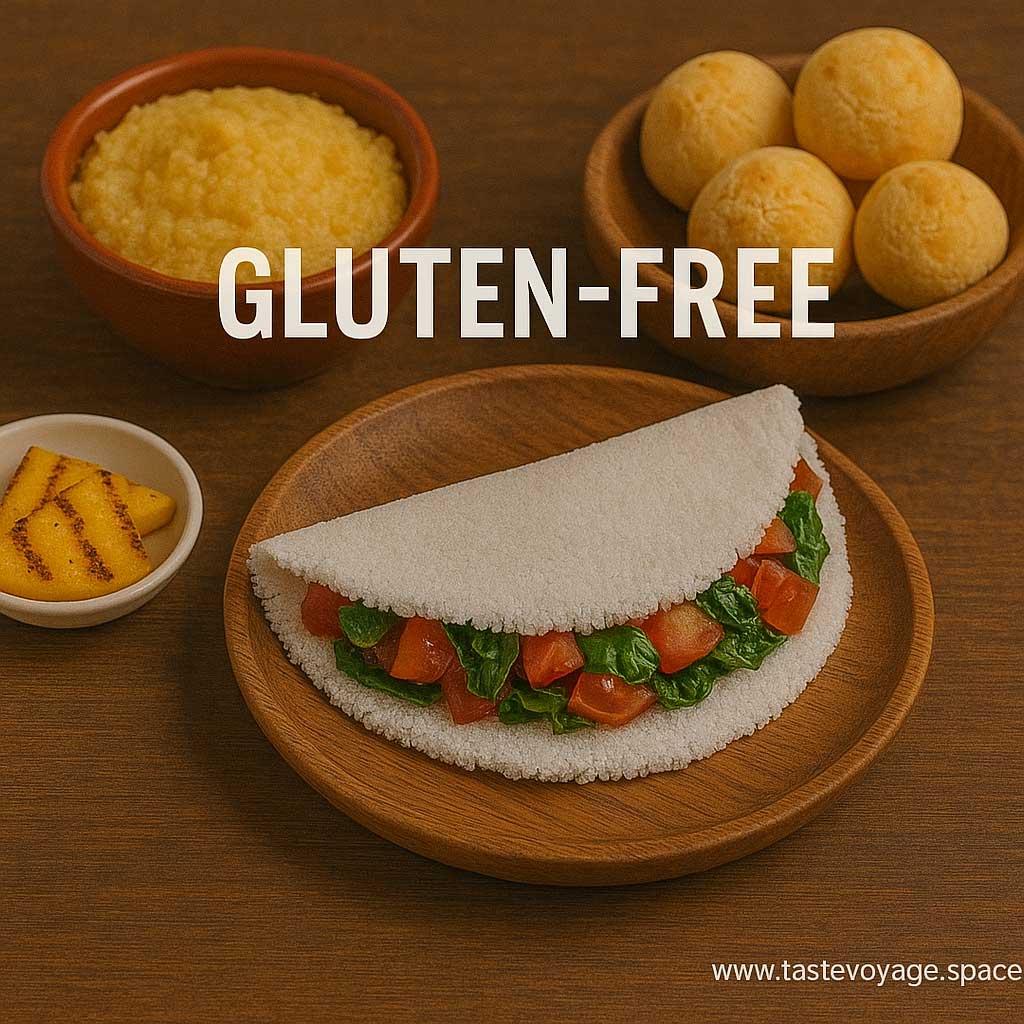Top Gluten-Free Flour Substitutes in Brazil
Travel the World Through Food >> Brazilian Cuisine>>Gluten-Free>> Top Gluten-Free Flour Substitutes in Brazil
Top Gluten-Free Flour Substitutes in Brazil
Discovering Brazilian Gluten-Free Flour Substitutes: A Celebration of Flavor and Tradition
Brazilian Cuisine is renowned for its vibrant flavors, diverse ingredients, and rich culinary traditions. Among its many treasures are innovative gluten-free flour substitutes that reflect the country’s resourcefulness and deep connection to natural ingredients. These substitutes not only cater to dietary needs but also embody the cultural significance of local produce, showcasing Brazil’s unique culinary identity.
Embracing Gluten-Free Alternatives in Brazilian Cooking
In Brazil, traditional baking and cooking often rely on local grains and starchy ingredients. As awareness around gluten sensitivity and celiac disease grows, many Brazilian chefs and home cooks have embraced gluten-free flour substitutes. These alternatives are more than just dietary options; they are a testament to Brazil’s agricultural diversity and culinary adaptability.
Common gluten-free flours in Brazil include cassava (manioc or yuca) flour, sweet potato flour, and arrowroot starch. Cassava flour, in particular, holds a special place in Brazilian kitchens. It’s a staple ingredient used in countless dishes, from pão de queijo (cheese bread) to farofa, a toasted cassava flour side. Its versatility and accessibility make it a cornerstone of Brazilian culinary heritage.
Cultural Value and Culinary Significance
The use of gluten-free flours in Brazil speaks to a profound respect for local ingredients and traditional methods. Cassava, originally cultivated by indigenous communities, has become integral to Brazilian food culture. Its processing methods and culinary applications have been passed down through generations, preserving centuries-old flavors and techniques.
These flour substitutes also highlight Brazil’s rich biodiversity. The country’s warm climate and fertile land produce an abundance of root vegetables and starches, which are transformed into nutritious and flavorful ingredients. This agricultural bounty influences the culinary landscape, making gluten-free options not just a dietary choice but a celebration of local produce.
Furthermore, gluten-free Brazilian flours contribute to the development of unique regional cuisines. For instance, in the northern regions, cassava-based dishes are especially prominent, reflecting local farming practices and cultural traditions. In coastal areas, coconut flour and other tropical ingredients are often incorporated, adding layers of flavor and cultural depth.
A Testament to Culinary Innovation
The ingenuity behind Brazilian gluten-free flour substitutes exemplifies how local knowledge and ingredients can shape innovative culinary practices. Chefs and home cooks alike experiment with these flours to create desserts, snacks, and bread that honor tradition while embracing modern dietary trends.
This culinary adaptability demonstrates Brazil’s dynamic food culture—a space where heritage and innovation coexist harmoniously. It encourages a deeper appreciation of Brazil’s diverse ingredients and their ability to inspire delicious, health-conscious dishes.
Final Thoughts: Celebrating a Rich Culinary Heritage
Brazilian gluten-free flour substitutes are more than just alternatives; they are an expression of cultural pride and culinary resilience. They embody the country’s rich agricultural landscape and its ongoing desire to preserve traditional flavors while adapting to contemporary needs.
For food enthusiasts and cultural explorers, these ingredients offer a window into Brazil’s vibrant culinary identity. They invite us to appreciate the beauty of Brazilian cuisine—its history, its flavors, and its innovative spirit. Whether enjoyed in a simple snack or as part of a complex dish, these gluten-free flours remind us of Brazil’s rich, flavorful heritage and the endless possibilities within its kitchens.
